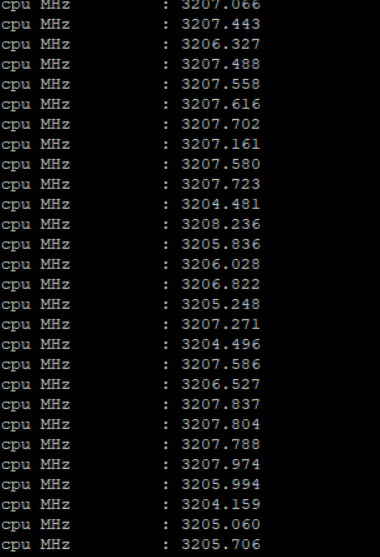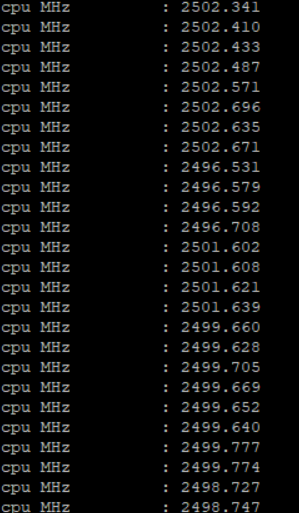AMD Rome Second Generation EPYC Review: 2x 64-core Benchmarked
by Johan De Gelas on August 7, 2019 7:00 PM ESTMulti-core SPEC CPU2006
For the record, we do not believe that the SPEC CPU "Rate" metric has much value for estimating server CPU performance. Most applications do not run lots of completely separate processes in parallel; there is at least some interaction between the threads. But since the benchmark below caused so much discussion, we wanted to satisfy the curiosity of our readers.
| 2P SPEC CPU2006 Estimates | ||||||
| Subtest | Xeon 8176 |
EPYC 7601 |
EPYC 7742 |
EPYC 7742 |
Zen2 vs Zen1 |
EPYC 7742 Vs Xeon |
| Cores | 56C | 64C | 128C | |||
| Frequency | 2.8 G | 2.7G | 2.5-3.2G | 2.5-3.2G | ||
| GCC | 7.4 | 7.4 | 7.4 | 8.3 | 7.4 | 7.4 |
| 400.perlbench | 1980 | 2020 | 4680 | 4820 | +132% | +136% |
| 401.bzip2 | 1120 | 1280 | 3220 | 3250 | +152% | +188% |
| 403.gcc | 1300 | 1400 | 3540 | 3540 | +153% | +172% |
| 429.mcf | 927 | 837 | 1540 | 1540 | +84% | +66% |
| 445.gobmk | 1500 | 1780 | 4160 | 4170 | +134% | +177% |
| 456.hmmer | 1580 | 1700 | 3320 | 6480 | +95% | +110% |
| 458.sjeng | 1570 | 1820 | 3860 | 3900 | +112% | +146% |
| 462.libquantum | 870 | 1060 | 1180 | 1180 | +11% | +36% |
| 464.h264ref | 2670 | 2680 | 6400 | 6400 | +139% | +140% |
| 471.omnetpp | 756 | 705 (*) | 1520 | 1510 | +116% | +101% |
| 473.astar | 976 | 1080 | 1550 | 1550 | +44% | +59% |
| 483.xalancbmk | 1310 | 1240 | 2870 | 2870 | +131% | +119% |
We repeat: the SPECint rate test is likely unrealistic. If you start up 112 to 256 instances, you create a massive bandwidth bottleneck, no synchronization is going on and there is a consistent CPU load of 100%, all of which is very unrealistic in most integer applications.
The SPECint rate estimate results emphasizes all the strengths of the new EPYC CPU: more cores, much higher bandwidth. And at the time it ignores one of smaller disadvantages: higher intercore latency. So this is really the ideal case for the EPYC processors.
Nevertheless, even if we take into account that AMD has an 45% memory bandwidth advantage and that Intel latest chip (8280) offers about 7 to 8% better performance, this is amazing. The SPECint rate numbers of the EPYC 7742 are - on average - simply twice as high as those of the best available socketed Intel Xeons.
Interestingly, we saw that most rate benchmarks ran at P1 clock or the highest p-state minus one. For example, this is what we saw when running libquantum:
While some benchmarks like h264ref were running at lower clocks.
The current server does not allow us to do accurate power measuring but if the AMD EPYC 7742 can stay within the 225W TDP while running integer workloads at all cores at 3.2 GHz, that would be pretty amazing. Long story short: the new EPYC 7742 seems to be able to sustain higher clocks than comparable Intel models while running integer workloads on all cores.












180 Comments
View All Comments
wrkingclass_hero - Sunday, August 11, 2019 - link
What does AMD have to do to get a Gold or Platinum recommendation?oRAirwolf - Thursday, August 15, 2019 - link
This is a good questionimaskar - Sunday, August 11, 2019 - link
Single thread performance is very important for those who lives in cloud. A quick example: suppose I provision 2 core/4gig vm (this is of course hyperthreads). And on AWS I have a choice - m5 and m5a, where AMD is cheaper. What do I sacrifice? Not really throughput, because you don't run your prod workloads at 100% CPU. But there is the latency. If those cores clocked lower, I would get the same amount of responses, but slower. And since in microservice world you have a chain of calls, you get this decrease 10 times. Is it worth it?That was the case for 1st gen EPYC. Would 2nd gen have latency parity?
notashill - Sunday, August 11, 2019 - link
It's hard to say until the cloud instances actually launch.The current m5a instances are using a custom SKU which is clocked at 2.5GHz max boost.
Rome's IPC is ~15% higher and clock speeds are all around higher so single threaded performance should be quite a bit better, but ultimately the exact numbers will depend on which SKUs the cloud vendors decide to use and how high they clock.
duploxxx - Tuesday, August 13, 2019 - link
did you actually ever work with hypervisors?there are other things than raw clock speed.... its all about scheduling and when there are more cores / socket available the scheduling is more relaxed, less ready time..... EPYC generation 1 is already awesome for hypervisor way better choice than most Intel counter parts for sure if you look at socket cost... but than again I am probably talking to a typical retard ****
JoeBraga - Wednesday, August 14, 2019 - link
Can you Explain better? But the license isn't bought by the quantity of coresor Per socket?imaskar - Wednesday, August 14, 2019 - link
He probably talks about VmWare, which is licensed per socket, not per core. So with EPYC gen2 you need twice less licenses for the same cloud capacity (assuming cores are equal).JoeBraga - Wednesday, August 14, 2019 - link
Now I understoodimaskar - Wednesday, August 14, 2019 - link
Rather than calling others retards, you could first dig a little deeper into an issue. No, I don't work with hypervisors directly, I'm from the other side. I write software and I want good latency (not insane one like for HFT, but still a good one). Because for throughput we could just spin one more instance. You can't buy latency horizontally.I'm not taking numbers out of the blue. There is a benchmark for AMD instances vs Intel instances on AWS. I'm not sure if we are allowed to post links to other resources here. Put this string into Google and you will surely find it: "A Look At The AMD EPYC Performance On The Amazon EC2 Cloud". Despite this article being very enthusiastic about those instances, you can really see that per core performance on Intel is better, meaning better latencies for web apps.
I will probably write my own set of benchmarks, because that one seems to completely ignore web servers. I am very enthusiastic about AMD instances, but they are definitely not a no-brainer.
quadibloc - Tuesday, August 13, 2019 - link
The new Ryzen chips compete well with what Intel is currently producing. But while they doubled AVX 2 support, so as to match what Intel has, Ice Lake will double that - as has been known for some time. So if this is what AMD thought would be competitive with Ice Lake, as Forrest Norrod said, AMD was not trying hard enough - and they're just lucky Ice Lake was late. AMD's position relative to Intel with its previous generations of Ryzens seems to be the limit of their ambitions. Combine that with Intel reacting to its current issues, and it looks to me that AMD will have to rethink some aspects of its strategy to avoid Intel being ahead when it comes time for next year's chips from both companies.